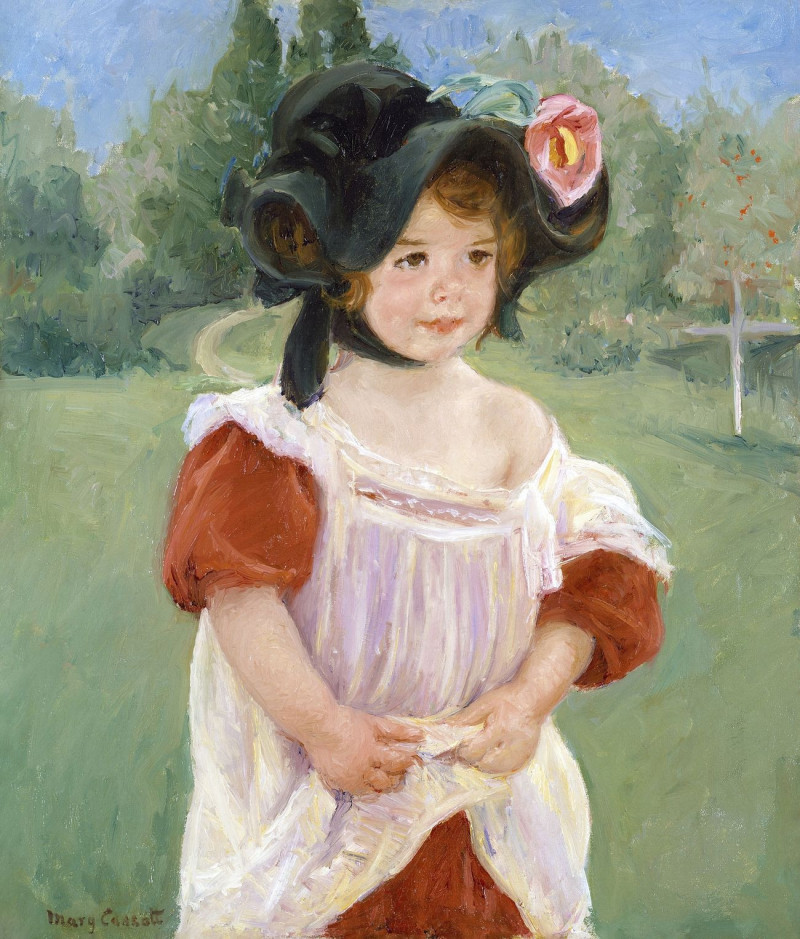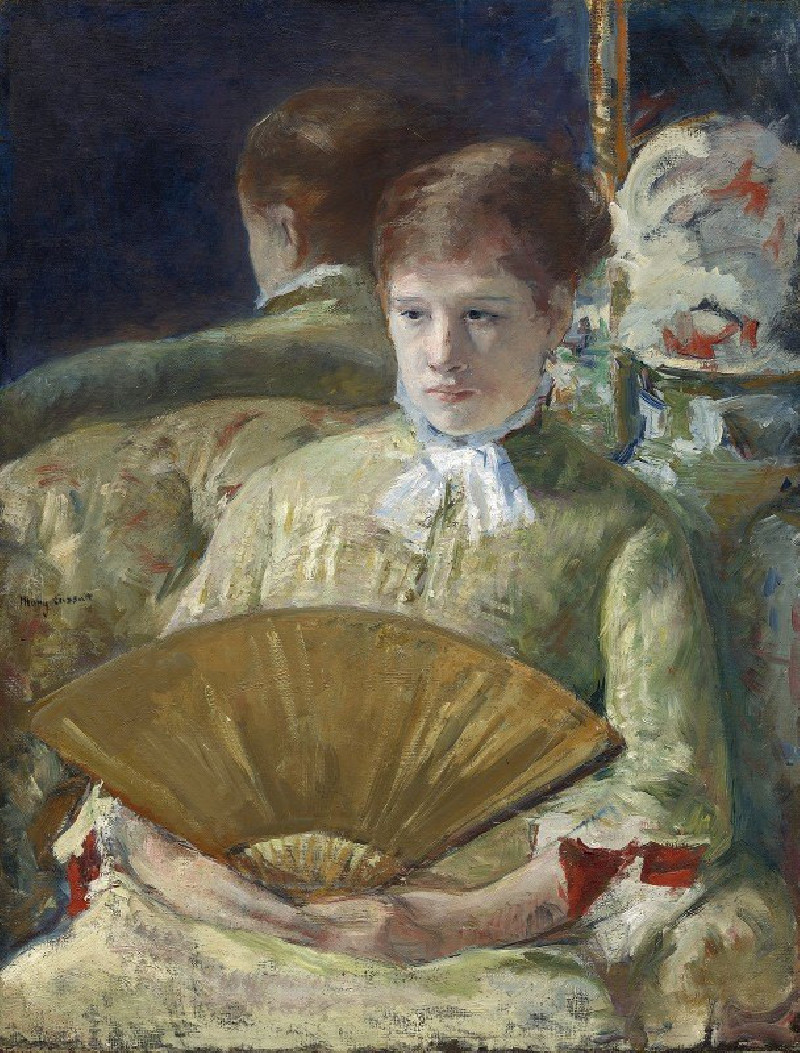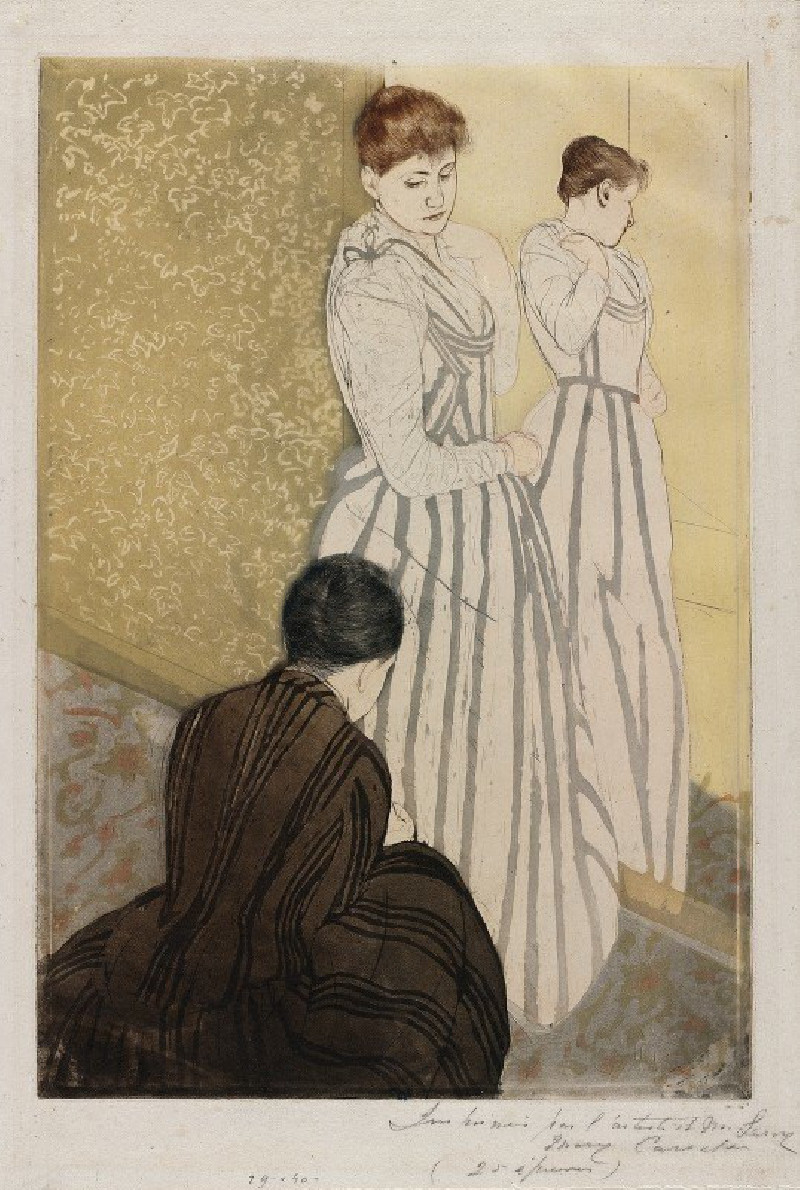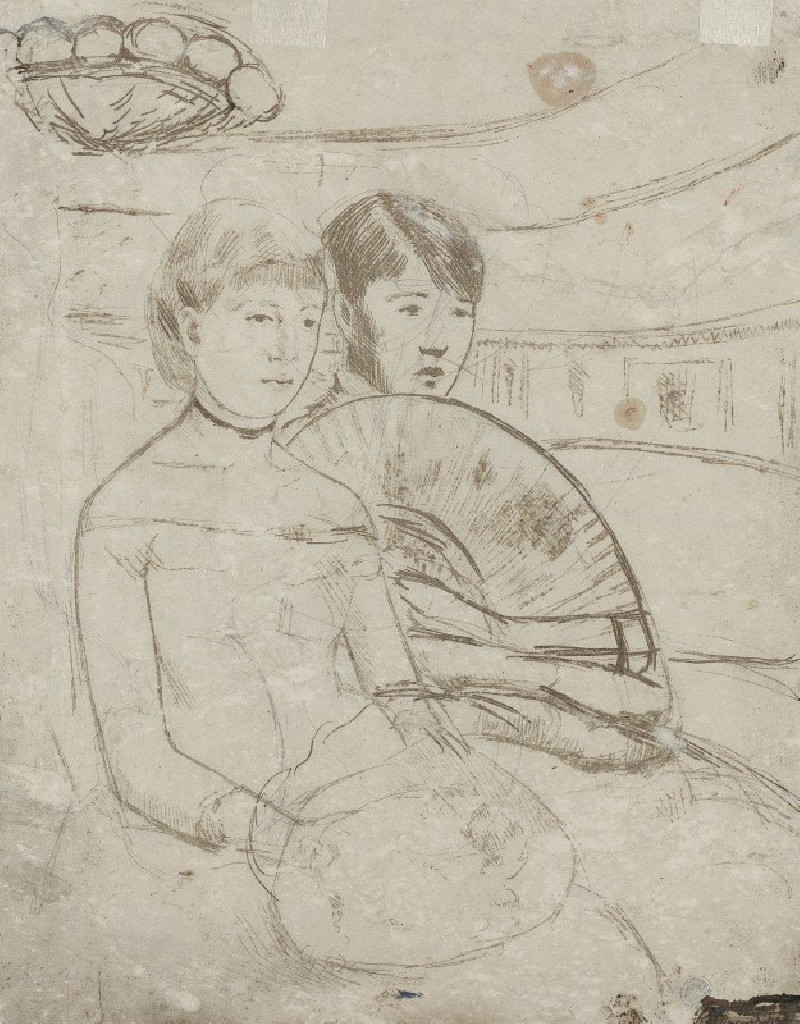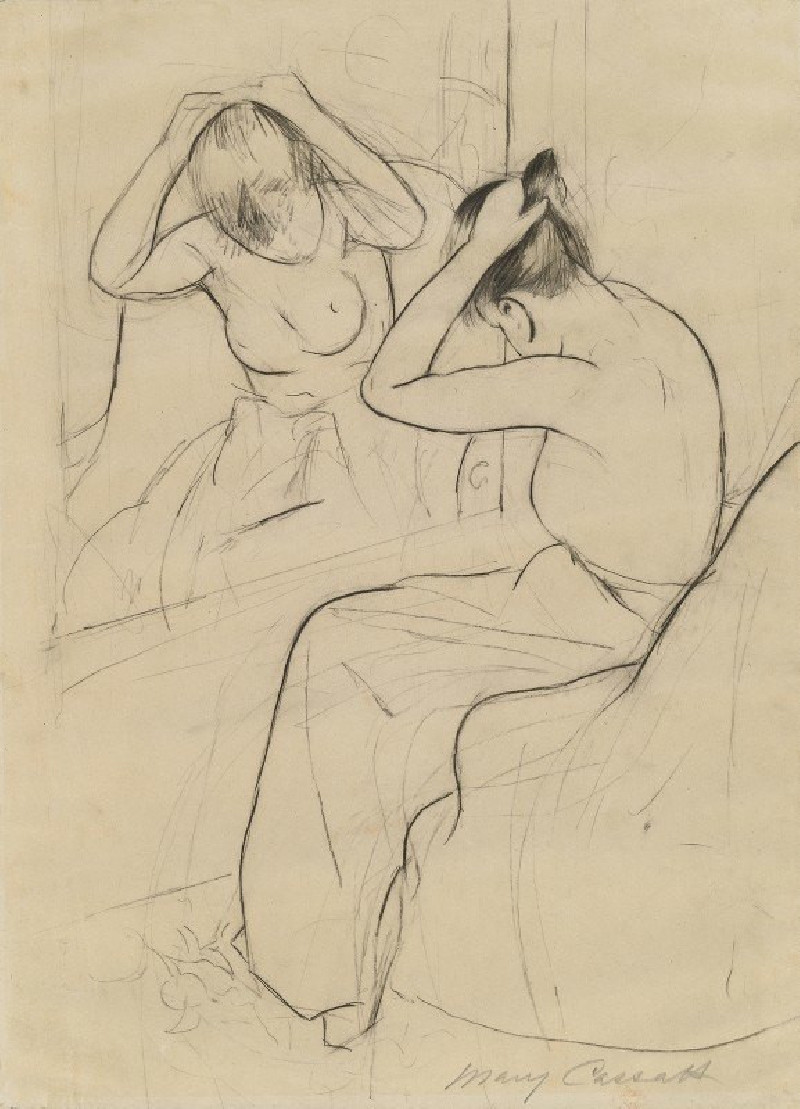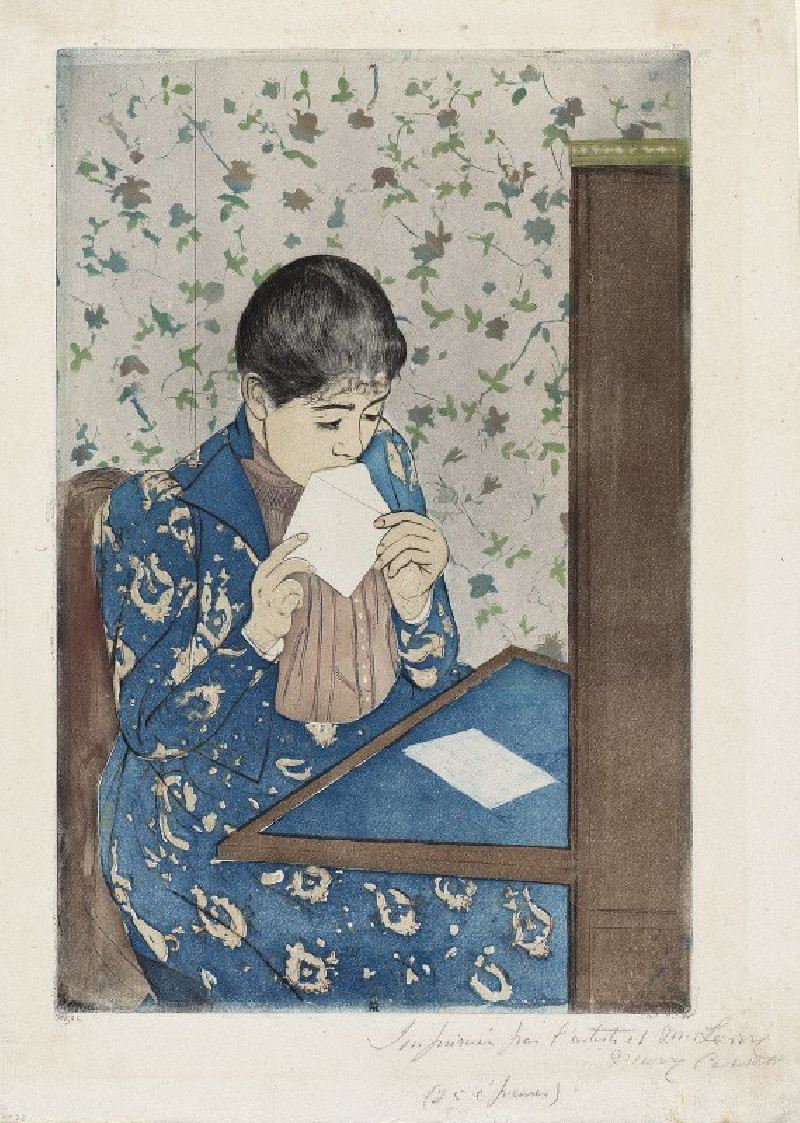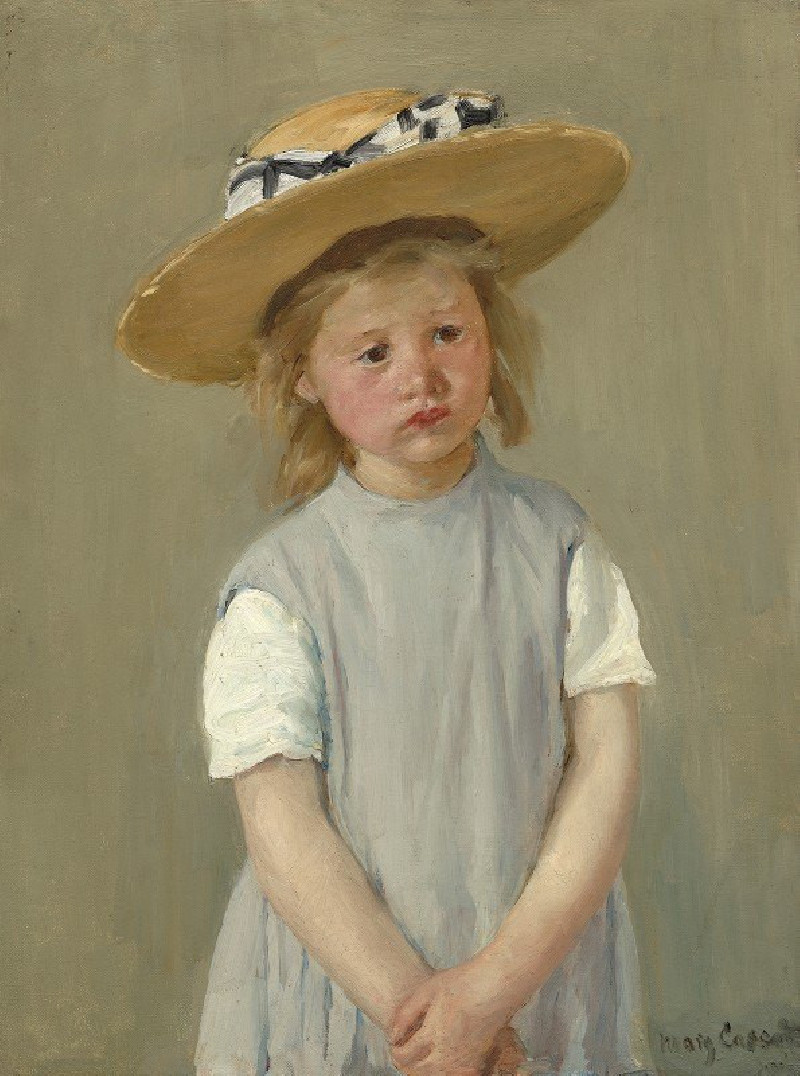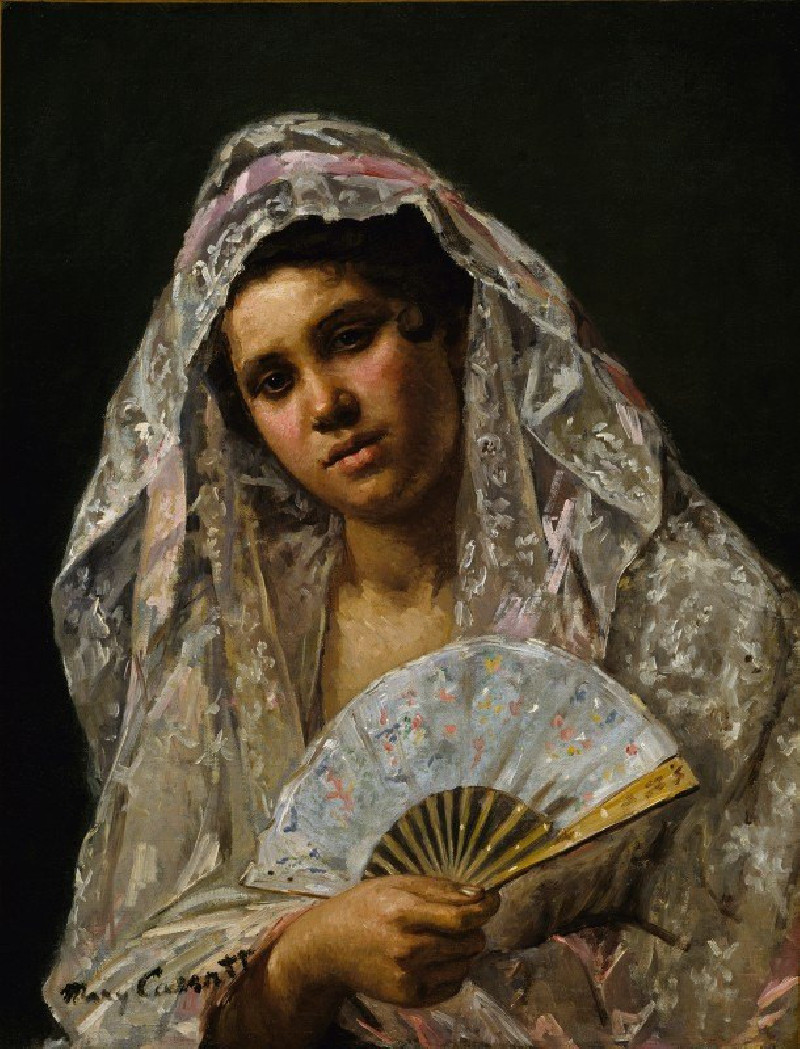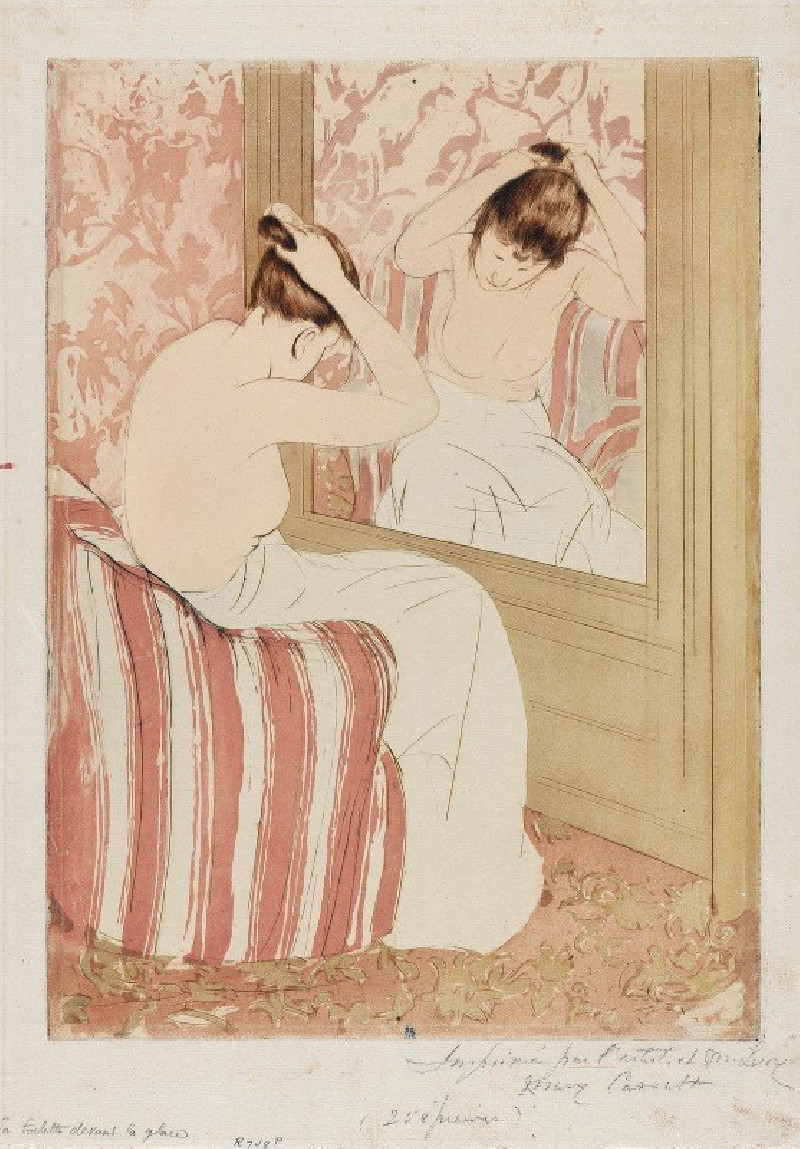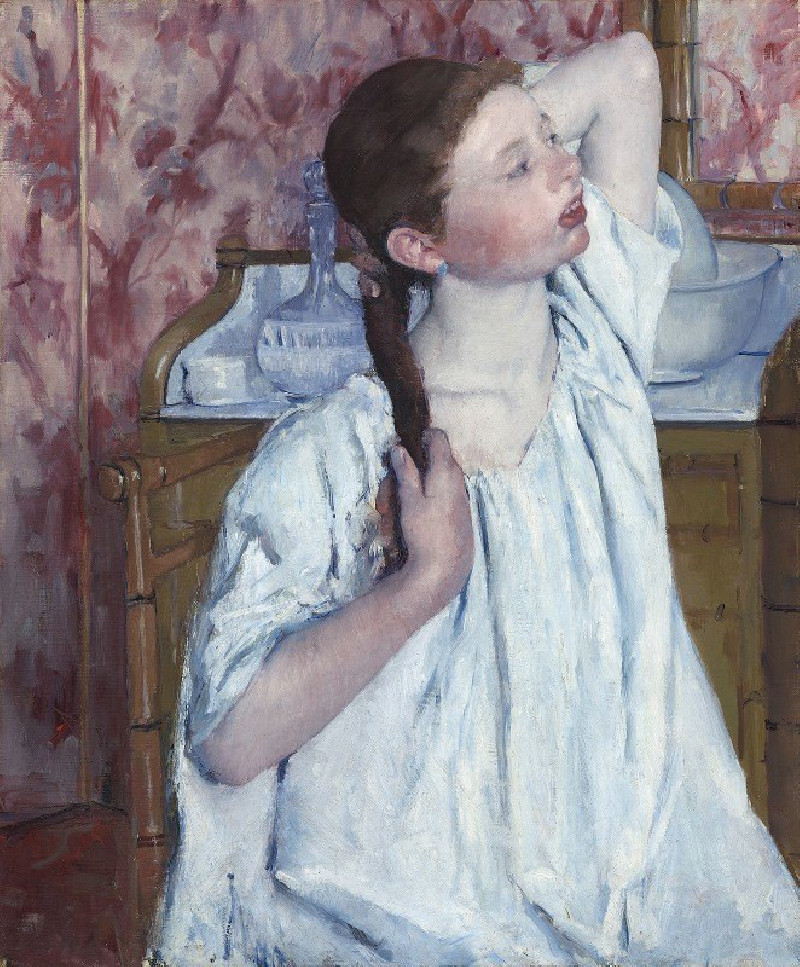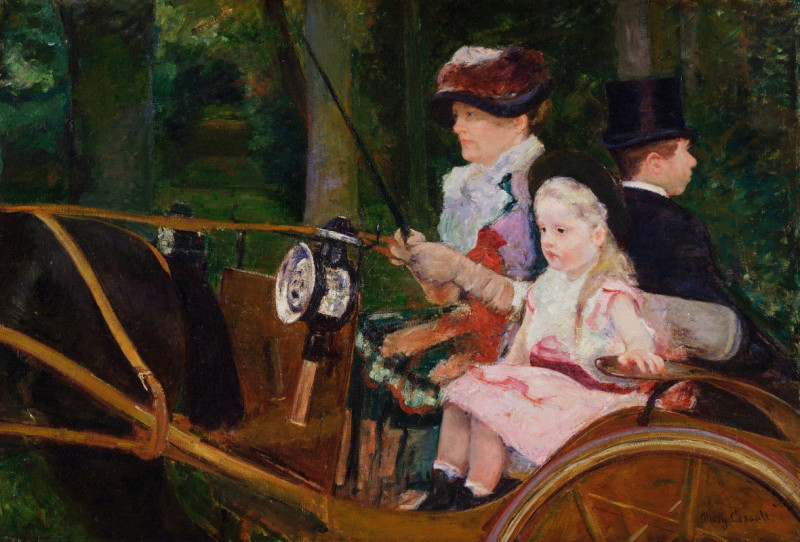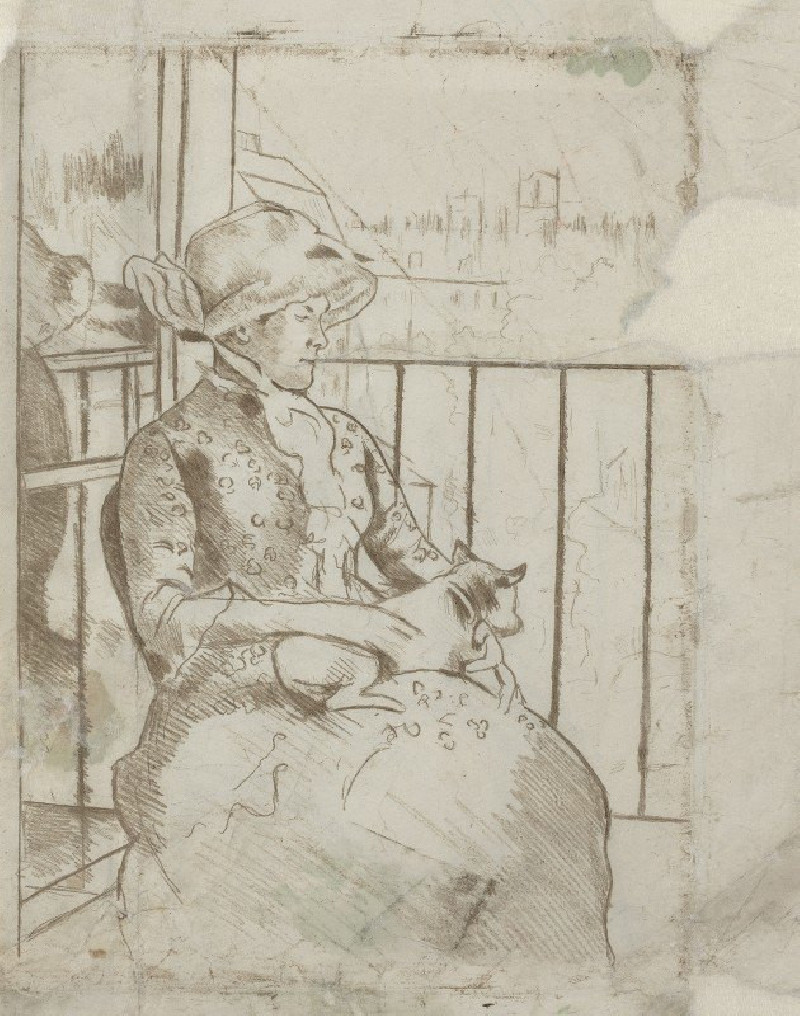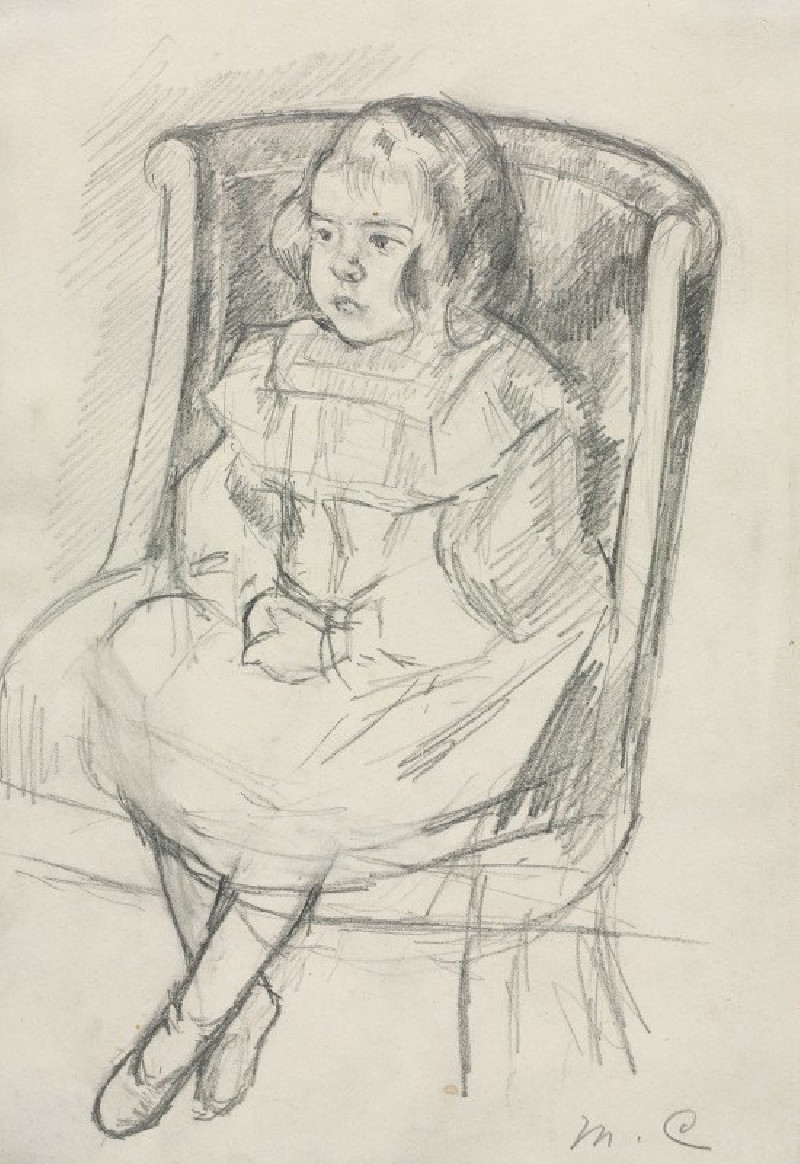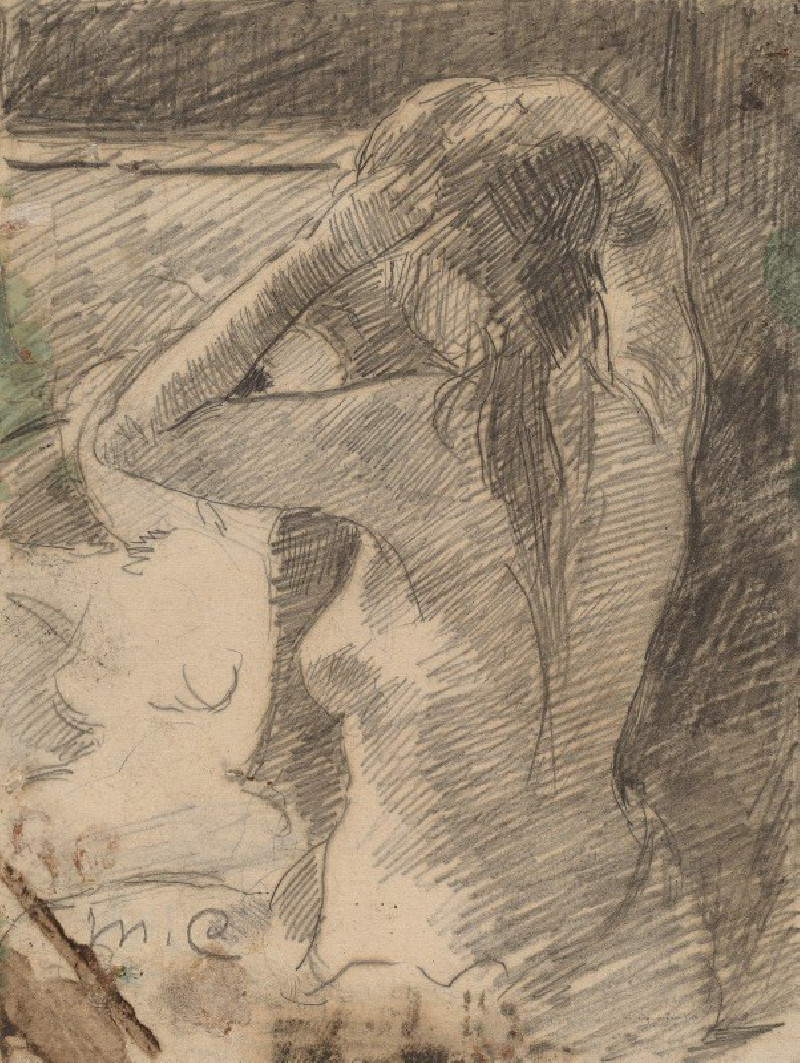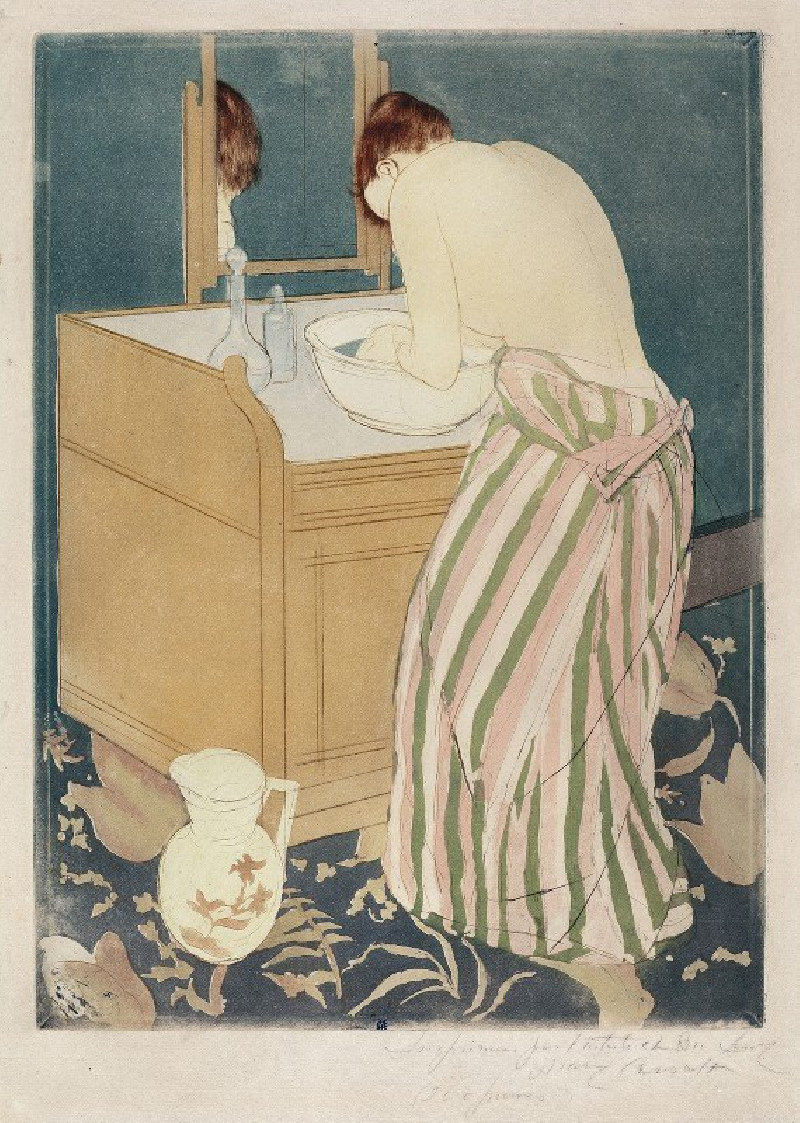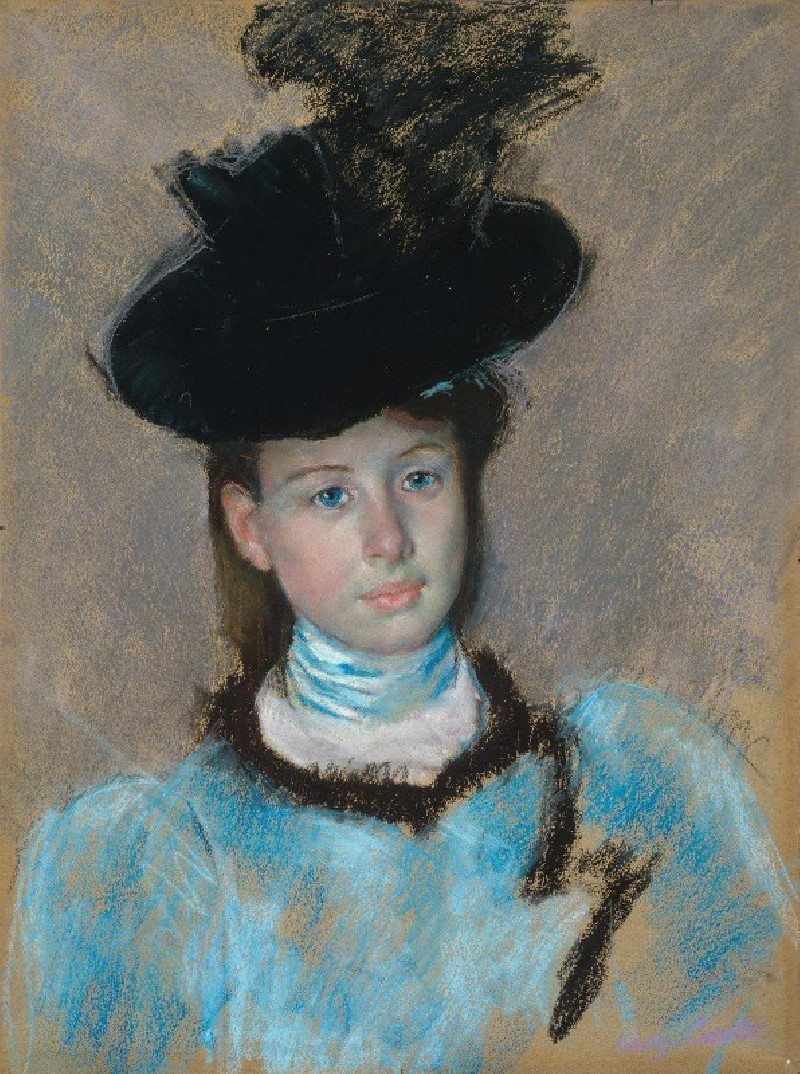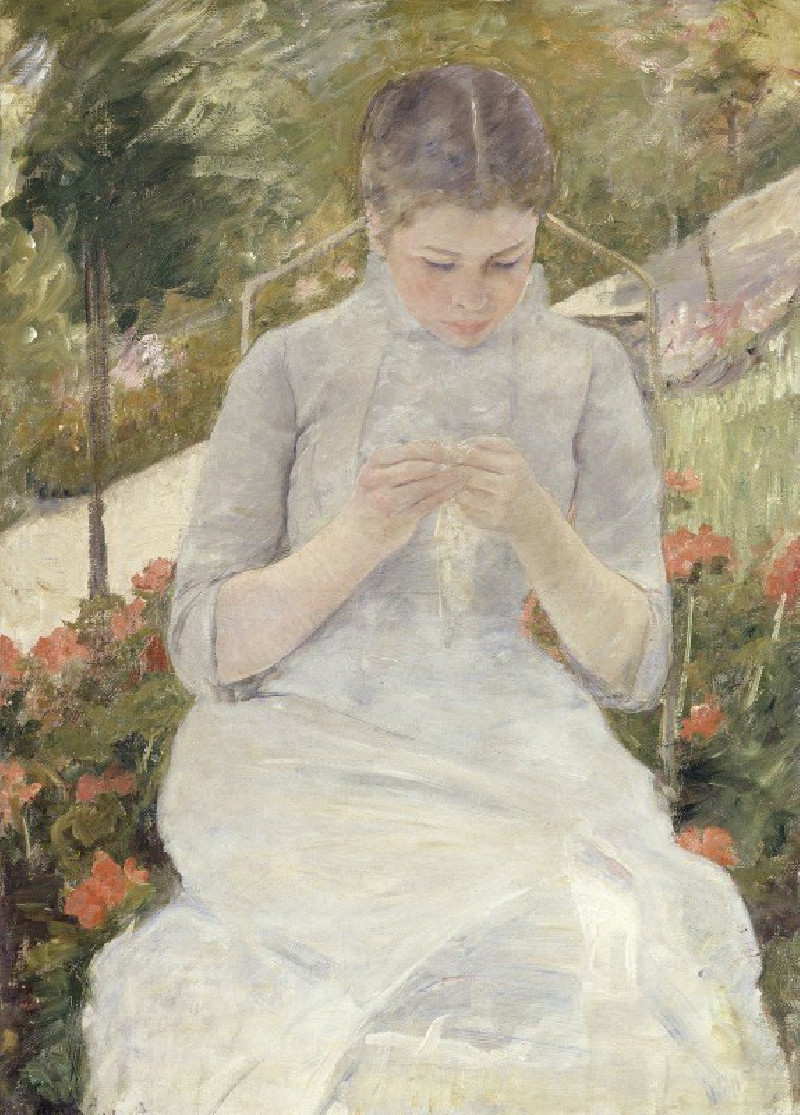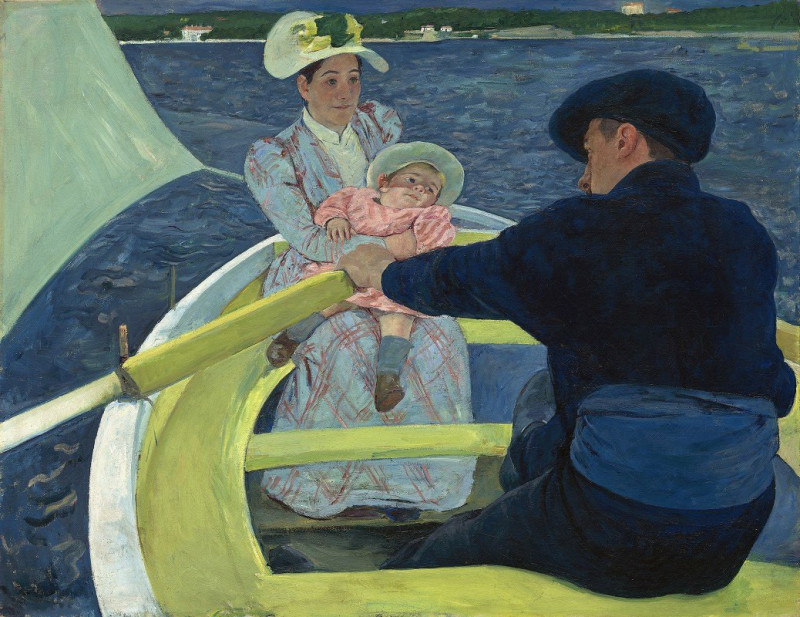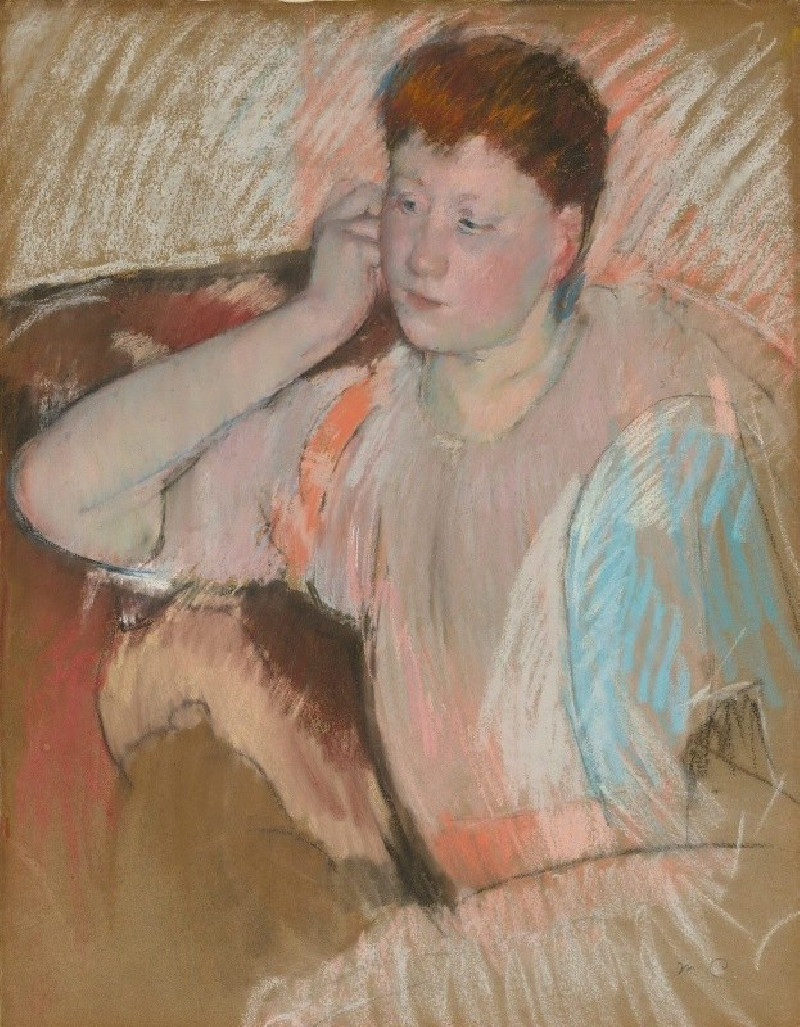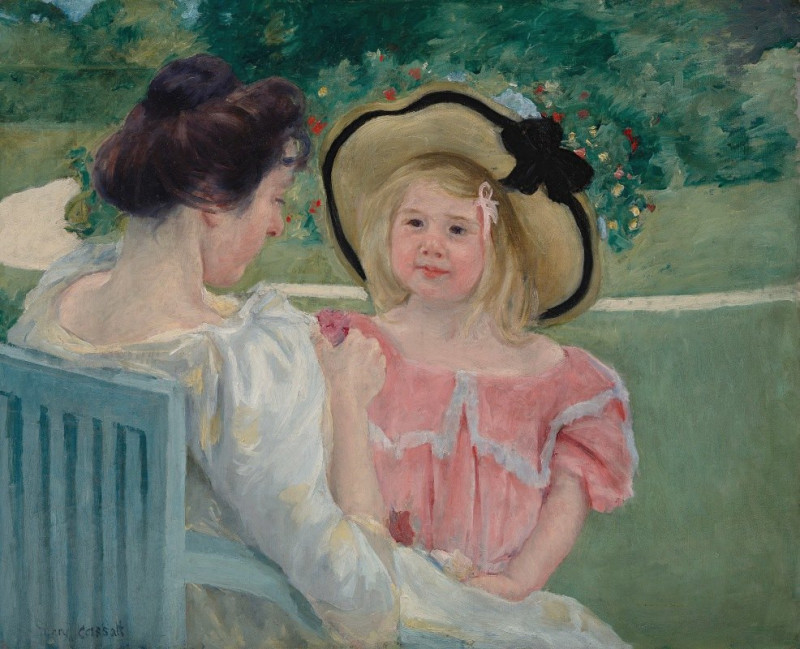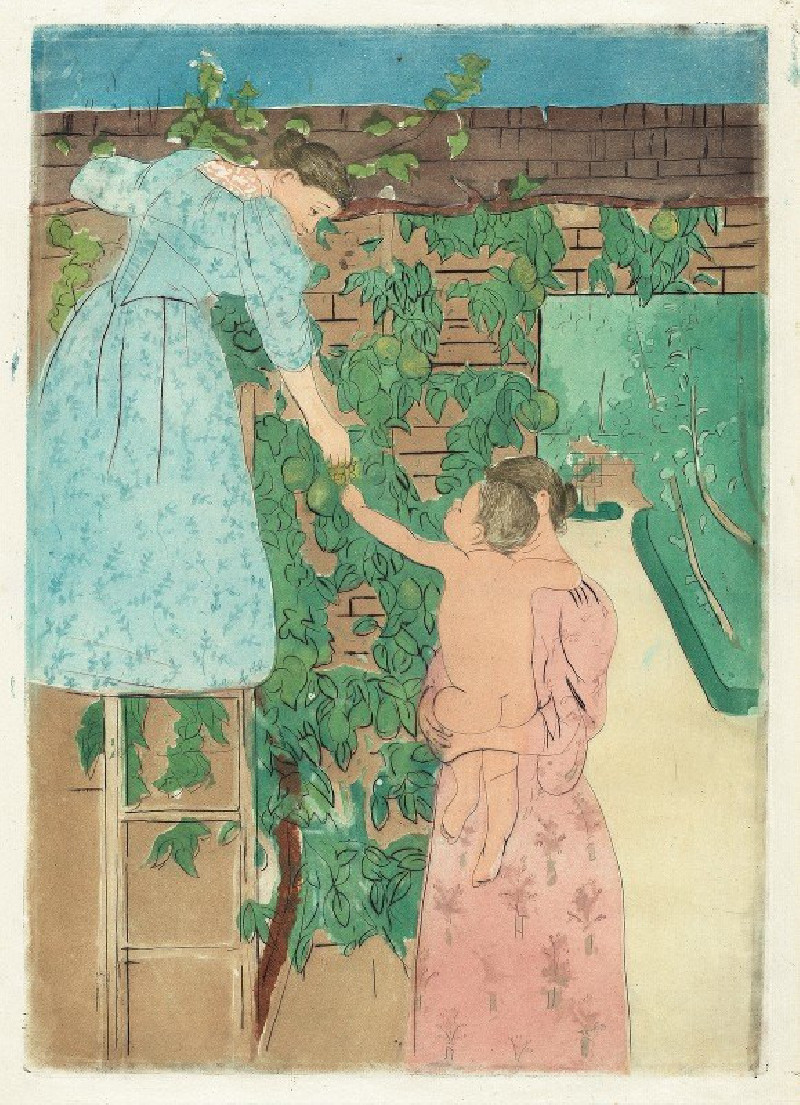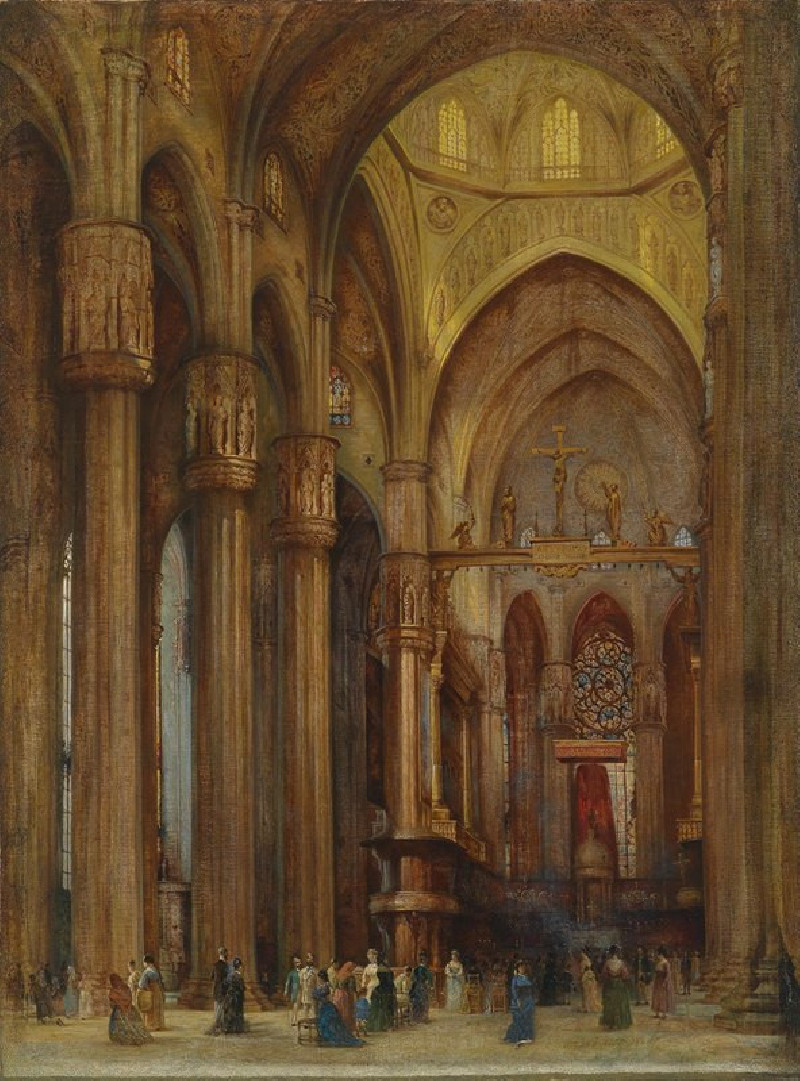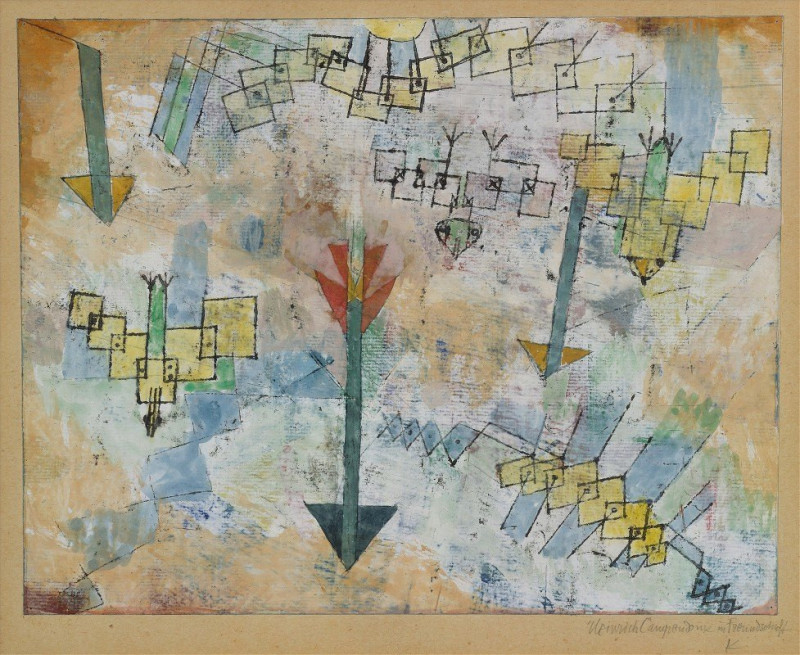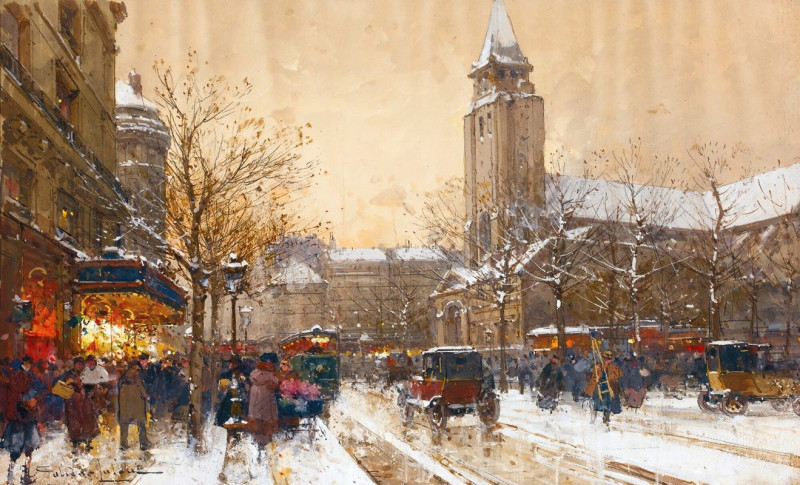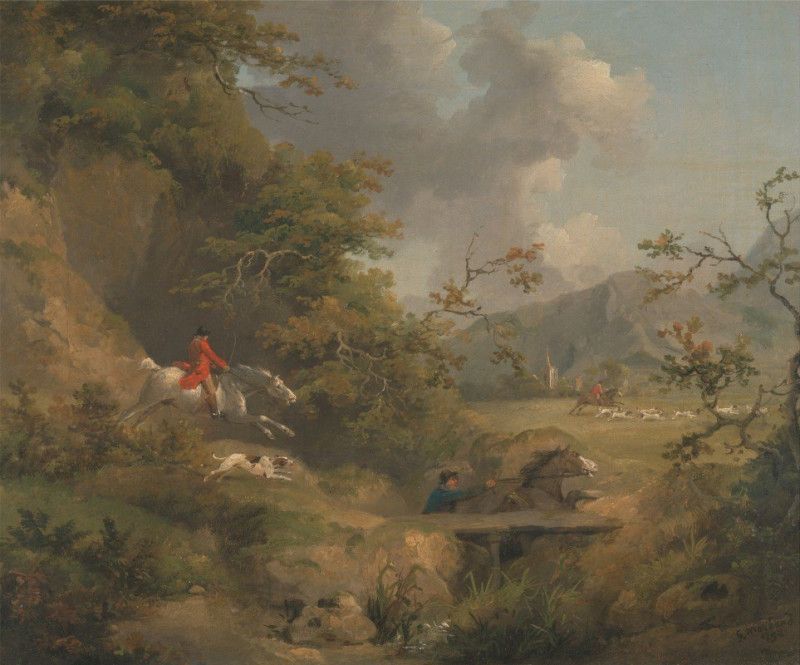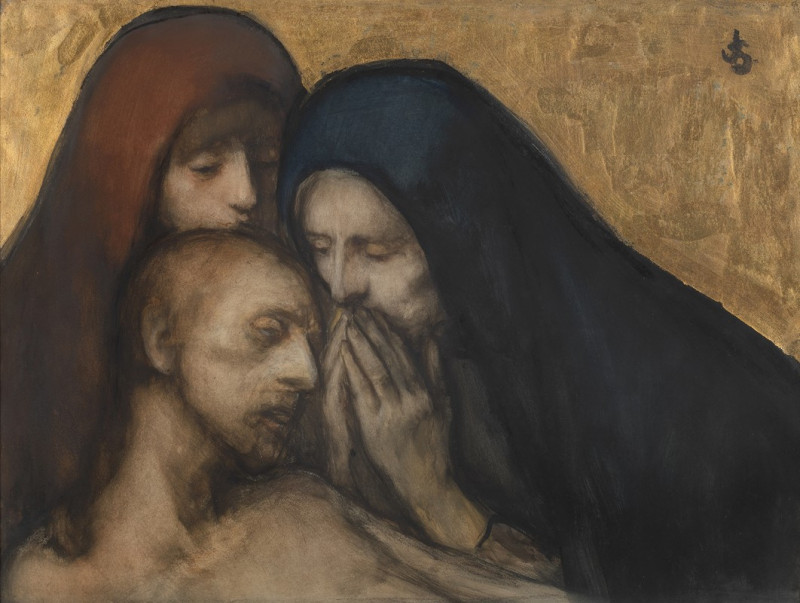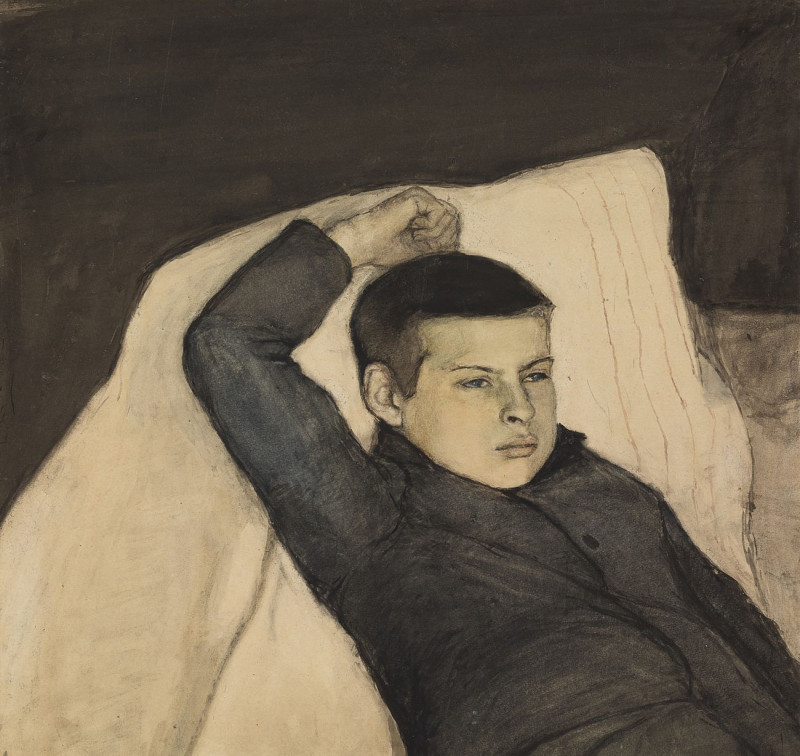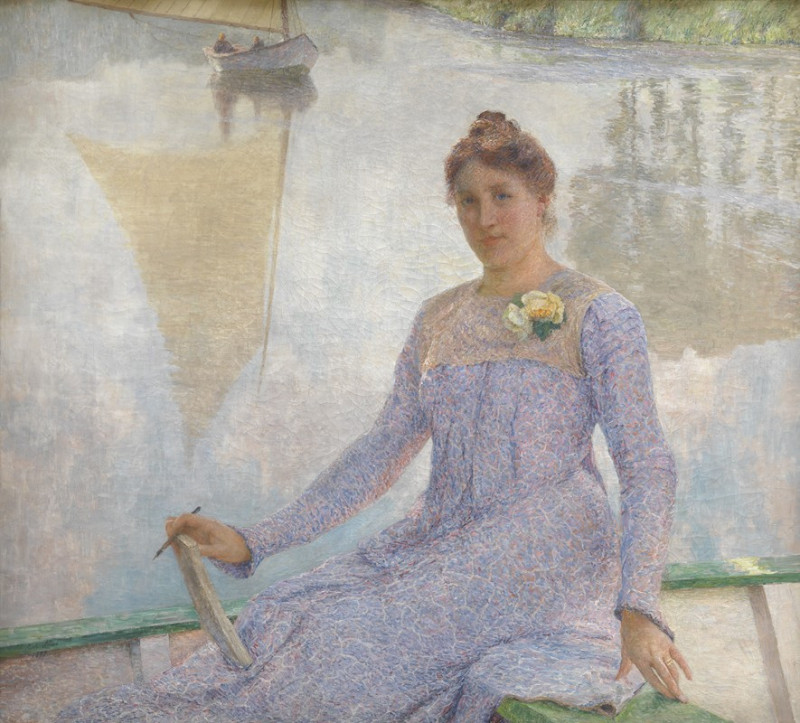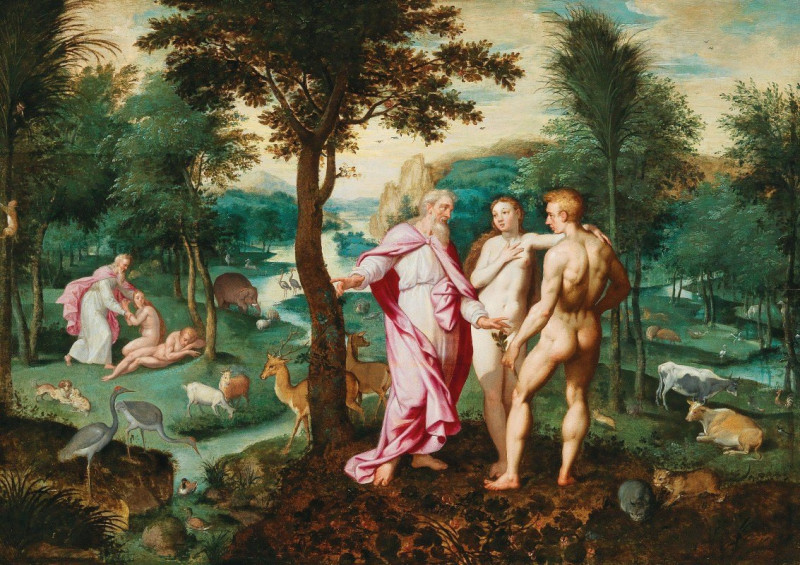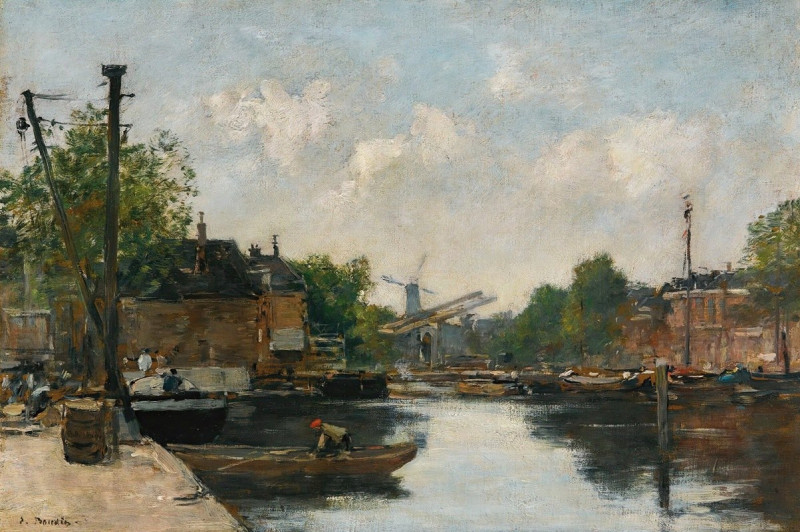Spring: Margot Standing In A Garden
Technique: Giclée quality print
Recommended by our customers
More about this artwork
In the painting "Spring: Margot Standing in a Garden" by Mary Cassatt, we see a charming and vivid portrayal of a young girl standing in a lush garden setting. The girl, presumably named Margot, is captured with a gentle yet pensive expression, suggesting a moment of youthful contemplation or perhaps shyness.Margot is dressed in a striking red dress with white and purple accents which, along with the large, elegant black hat adorned with a big pink flower, suggests a style typical of late 19th or early 20th century children's fashion. The hat, with its sweeping contours and bold styling, frames her face beautifully, drawing attention to her soft, rosy cheeks and thoughtful gaze.The background is depicted with broad, expressive brushstrokes in various shades of green, suggesting a verdant garden in full bloom. This setting creates a serene and lively atmosphere. Cassatt's use of light and color here is masterful, with the greens of the garden contrasting harmoniously against the reds of Margot's dress, making the figure stand out.Cassatt, known for her portrayal of mother-child relationships and various facets of female life, also beautifully captures the essence of childhood in this painting. This artwork not only showcases her skill in composition and color, but also her ability to render human emotions and moments with tenderness and depth.
Delivery
Returns
Mary Stevenson Cassatt was an American painter and printmaker. She was born in Allegheny City, Pennsylvania (now part of Pittsburgh’s North Side), but lived much of her adult life in France where she befriended Edgar Degas and exhibited with the Impressionists. Cassatt often created images of the social and private lives of women, with particular emphasis on the intimate bonds between mothers and children.
She was described by Gustave Geffroy as one of "les trois grandes dames" (the three great ladies) of Impressionism alongside Marie Bracquemond and Berthe Morisot.In 1879, Diego Martelli compared her to Degas, as they both sought to depict movement, light, and design in the most modern sense.

